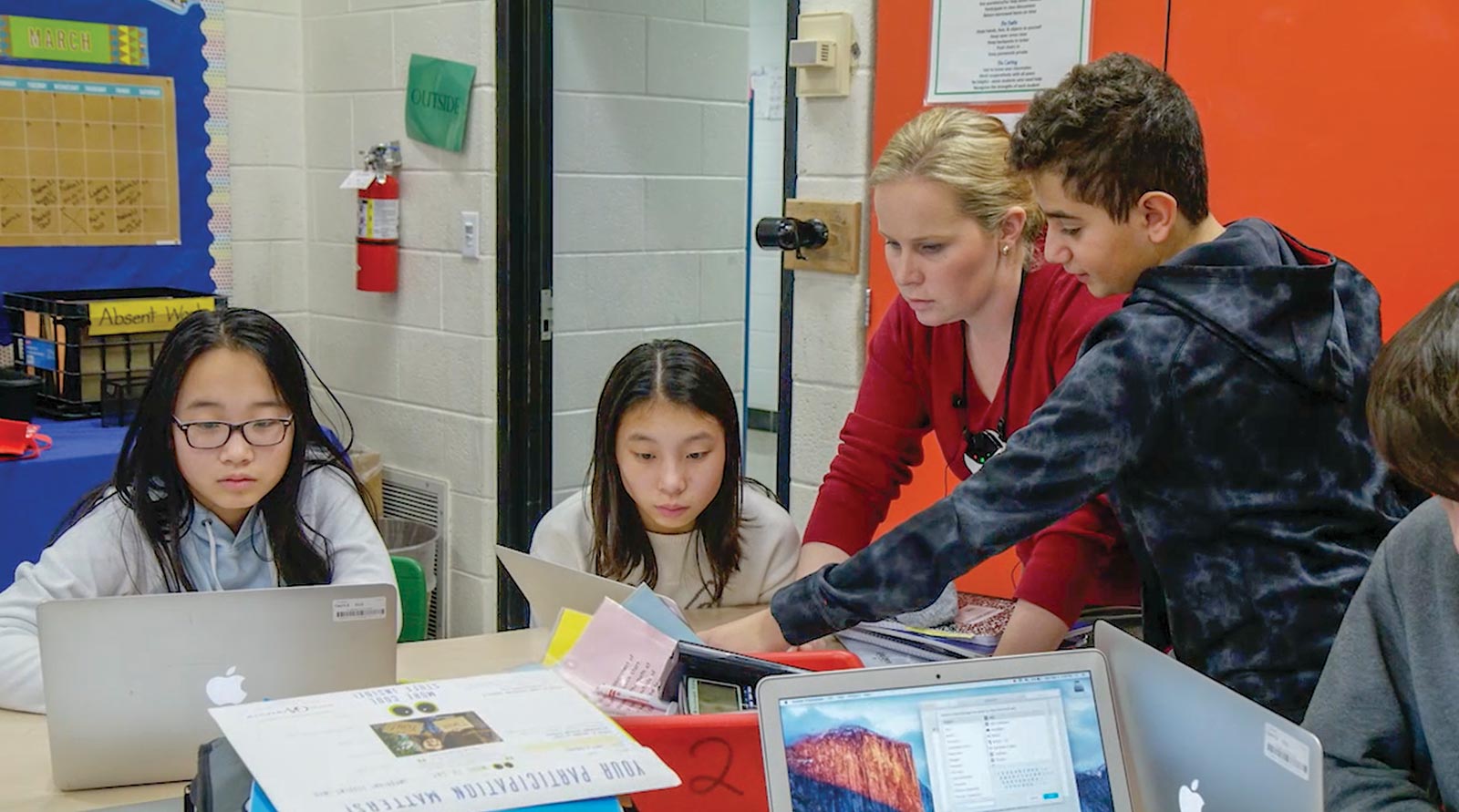Designing a Digital Collaborative Mathematics Classroom, Integrating Computational Thinking in STEM, Why Everyone Can and Should be a Scientist, and more in Spring @Concord
25 Years of Innovation and a Glimpse into the Future
The Concord Consortium was founded on a single, grand vision: technology would one day transform the way we learn science, mathematics, and engineering. A quarter century later our vision is playing out in classrooms and homes around the world.
Designing a Digital Collaborative Mathematics Classroom Using a Problem-Based Curriculum
For nearly three decades, the Connected Mathematics Project (CMP) has worked to design, develop, field test, evaluate, and disseminate student and teacher materials for mathematics classrooms. CMP was developed as a complete three-year, problem-based middle grades curriculum. CMP has been used by thousands of students across all 50 states and in many international schools, and has received multiple awards and accolades, including exemplary status by the U.S. Department of Education’s Mathematics and Science Education Expert Panel.
Integrating Computational Thinking in STEM
The depth and complexity of societal, environmental, and economic problems facing our nation and the globe increasingly demand computational solutions. But the principles of computing need not be relegated to computer science courses. Integration with STEM subjects offers an enticing path for bringing computing to many students.
Why Everyone Can and Should be a Scientist
Imagine an eighth grade student climbing down a bank to a creek near her school every day of her summer vacation. She stops at the water’s edge to carefully take a sample in a 5 ml test tube. She analyzes the water along with friends and a few members of a senior center, who have joined her group to gather additional samples.
Automated Scoring Helps Student Argumentation
For the past four years, a robot avatar named HASBot has provided feedback to hundreds of middle and high school students on how to write strong scientific arguments. HASBot—a combination of High-Adventure Science or “HAS” and “Bot” as in automated scoring robot—came to digital life through the National Science Foundation-funded High-Adventure Science: Automated Scoring for Argumentation project. In partnership with the Educational Testing Service (ETS), we integrated HASBot into two curriculum modules in which students use models and real-world data to investigate issues related to humans and environmental sustainability.
A Virtual Storm Teaches Computational Thinking
Few phenomena are as important to our daily lives as weather. We listen intently to reports of far-flung weather catastrophes and exchange updates about our local weather as a matter of course. Weather is no less important to children—a rained-out championship game or an unexpected snow day can be a major event.
Under the Hood: What Do We Do When There’s Too Much Data to Look At?
Many Concord Consortium curricular activities are delivered online, which means we can log student actions. This presents an opportunity and a problem.
Innovator Interview: Helen Quinn
Professor Emerita of Particle Physics and Astrophysics, SLAC National Accelerator Laboratory, and Chair, A Framework for K-12 Science Education, became chair of the Board of the Concord Consortium in January 2019.
News at Concord Consortium
The Concord Consortium is spearheading the field of data science education. These initiatives are preparing learners with the skills of data analysis so they are ready for future data science occupations.





